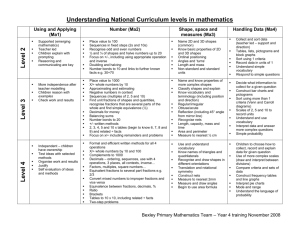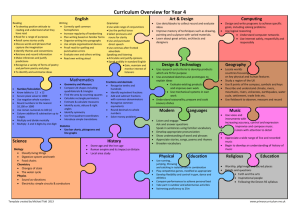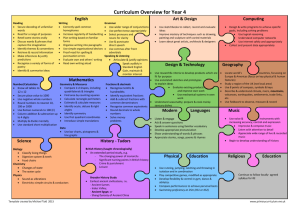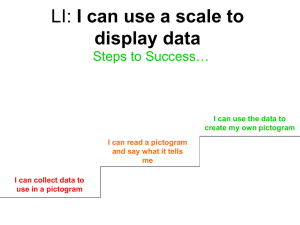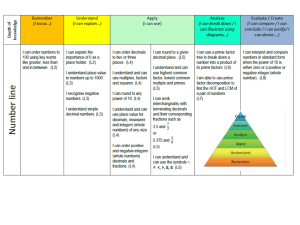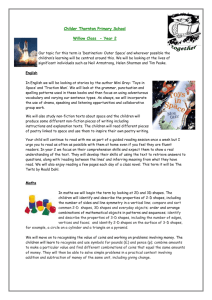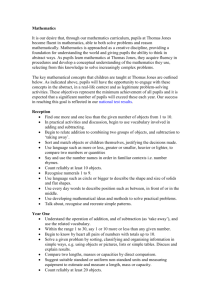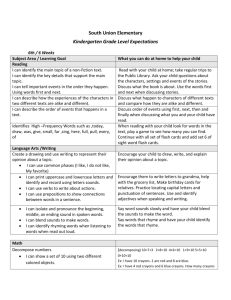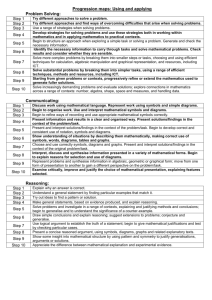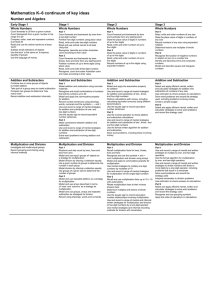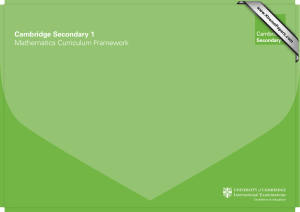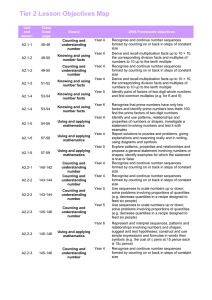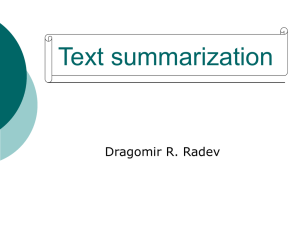Pupil MA2 I can.... Teacher I can continue sequences involving
advertisement
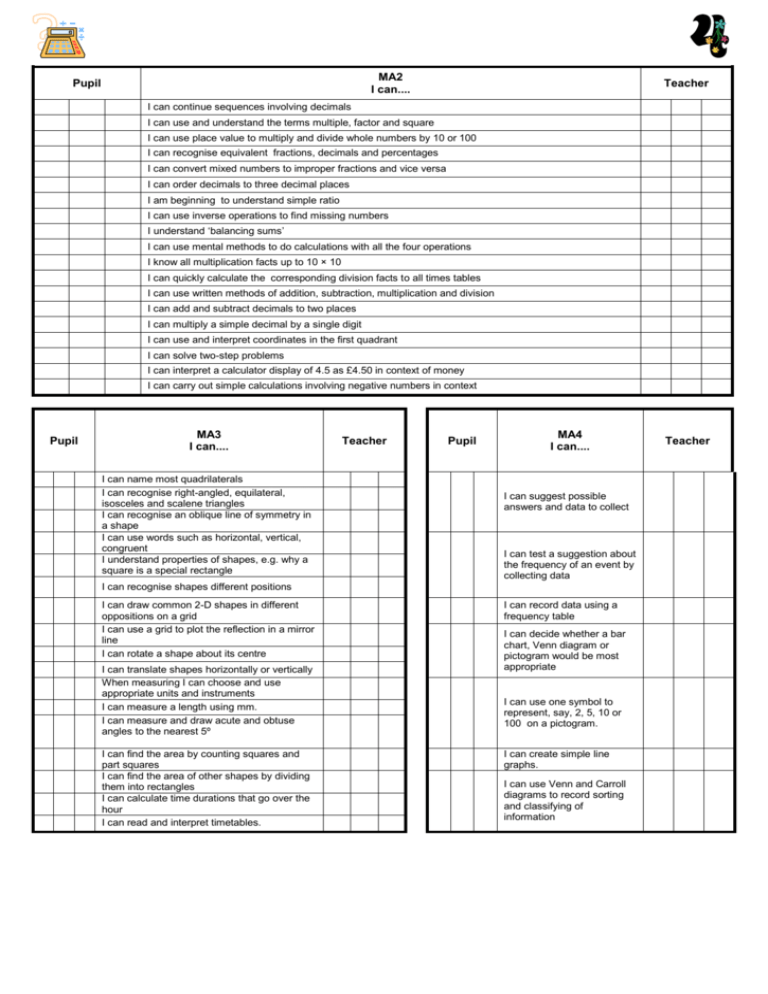
MA2 I can.... Pupil Teacher I can continue sequences involving decimals I can use and understand the terms multiple, factor and square I can use place value to multiply and divide whole numbers by 10 or 100 I can recognise equivalent fractions, decimals and percentages I can convert mixed numbers to improper fractions and vice versa I can order decimals to three decimal places I am beginning to understand simple ratio I can use inverse operations to find missing numbers I understand ‘balancing sums’ I can use mental methods to do calculations with all the four operations I know all multiplication facts up to 10 × 10 I can quickly calculate the corresponding division facts to all times tables I can use written methods of addition, subtraction, multiplication and division I can add and subtract decimals to two places I can multiply a simple decimal by a single digit I can use and interpret coordinates in the first quadrant I can solve two-step problems I can interpret a calculator display of 4.5 as £4.50 in context of money I can carry out simple calculations involving negative numbers in context Pupil MA3 I can.... I can name most quadrilaterals I can recognise right-angled, equilateral, isosceles and scalene triangles I can recognise an oblique line of symmetry in a shape I can use words such as horizontal, vertical, congruent I understand properties of shapes, e.g. why a square is a special rectangle Teacher Pupil MA4 I can.... I can suggest possible answers and data to collect I can test a suggestion about the frequency of an event by collecting data I can recognise shapes different positions I can draw common 2-D shapes in different oppositions on a grid I can use a grid to plot the reflection in a mirror line I can rotate a shape about its centre I can translate shapes horizontally or vertically When measuring I can choose and use appropriate units and instruments I can measure a length using mm. I can measure and draw acute and obtuse angles to the nearest 5º I can find the area by counting squares and part squares I can find the area of other shapes by dividing them into rectangles I can calculate time durations that go over the hour I can read and interpret timetables. I can record data using a frequency table I can decide whether a bar chart, Venn diagram or pictogram would be most appropriate I can use one symbol to represent, say, 2, 5, 10 or 100 on a pictogram. I can create simple line graphs. I can use Venn and Carroll diagrams to record sorting and classifying of information Teacher
